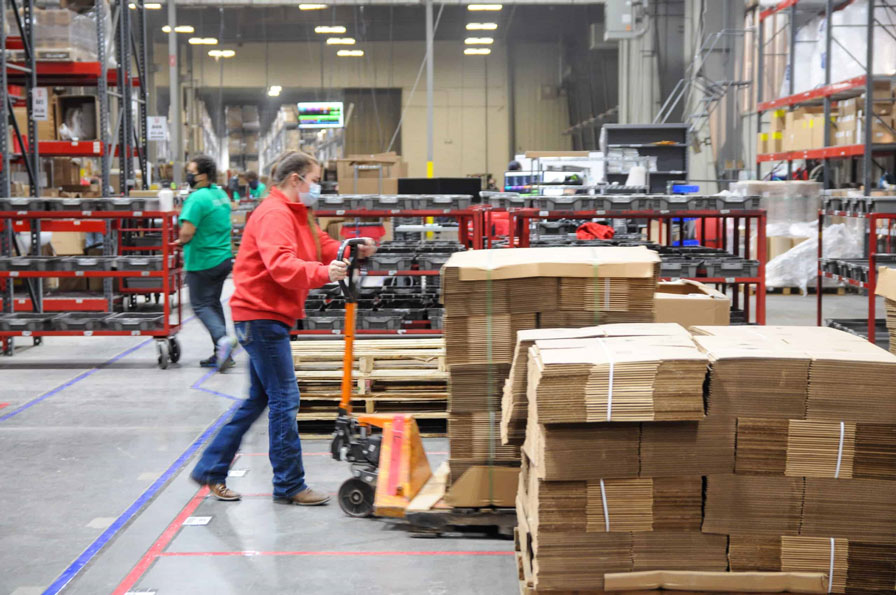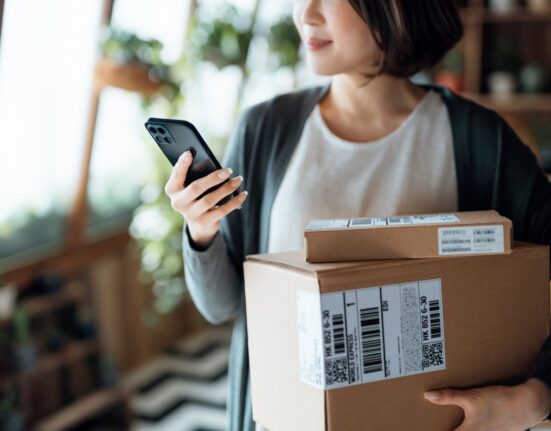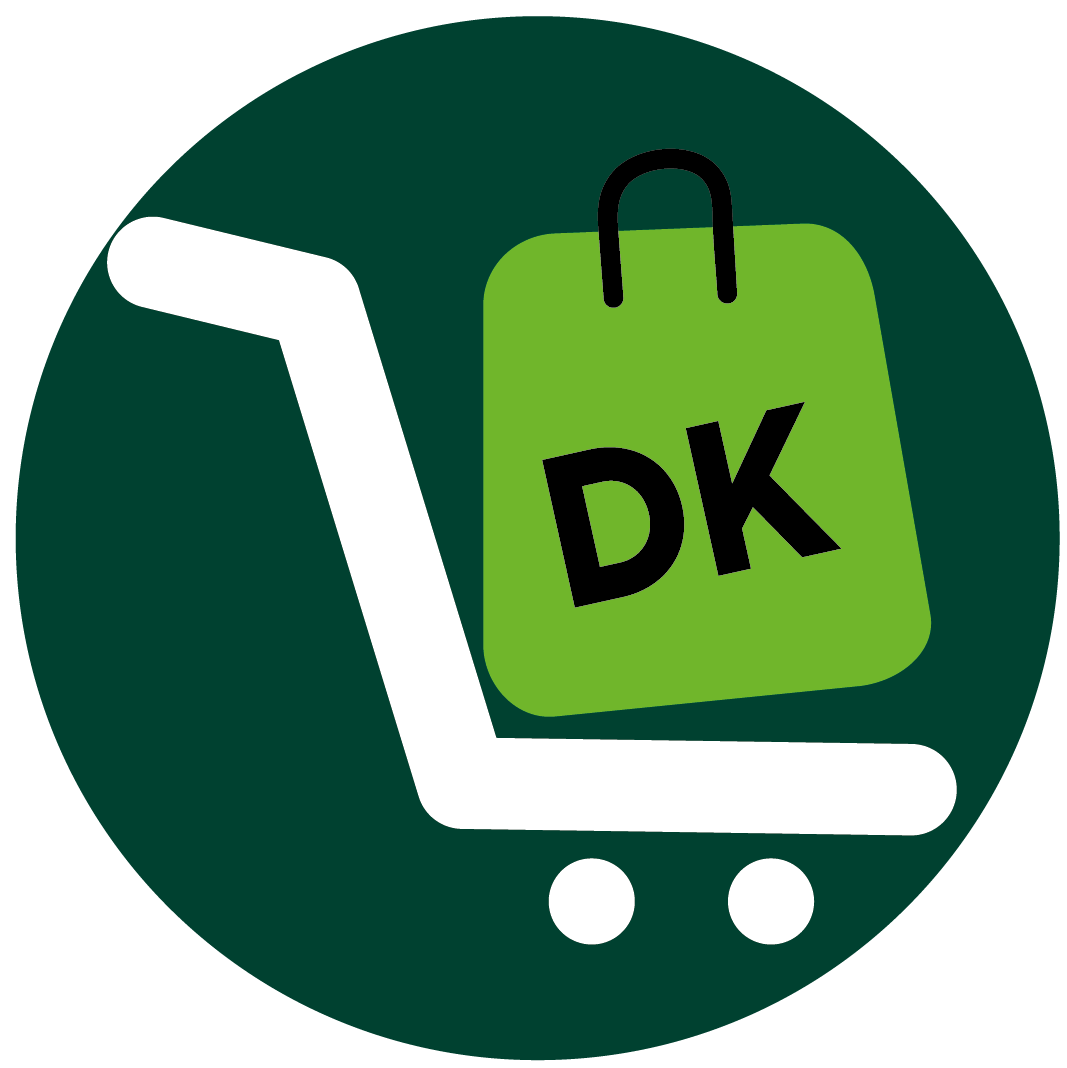Do you dream of reaching millions of customers with your products but dread the logistics of packing, shipping, and returns? Then Fulfillment by Amazon (FBA) is your golden ticket. This innovative program transforms Amazon’s vast infrastructure into your personal fulfillment center, taking the heavy lifting off your shoulders and propelling your business to new heights.
Imagine you list your products on the world’s largest online marketplace, and when a customer clicks “buy,” Amazon’s magic takes over. It seamlessly stores your inventory in its warehouses, expertly pick and pack each order, and deliver it directly to your customer’s doorstep, often with lightning-fast Prime shipping.
Not only does this free you from the time-consuming tasks of fulfillment, but it also grants you access to Amazon’s trusted reputation, exceptional customer service, and efficient returns handling. In essence, FBA empowers you to focus on what you do best – sourcing, marketing, and growing your brand – while Amazon handles the rest.
But one big question to ask yourself is: Is Amazon FBA worth it or not?
- LET’S CUT TO THE CHASE!
- NOW, LET’S DETAIL THINGS FOR YOU.
- WHAT’S THE CATCH WITH AMAZON FBA?
- WHAT YOU NEED TO KNOW.
- WHAT ARE AMAZON FBA’S COMPETITORS OFFERING?
- WHAT AFFECTS AMAZON FBA’S PRICES?
- WHAT AFFECTS PRICES IN THE INDUSTRY OVERALL?
- HOW TO GET THE BEST DEAL WITH AMAZON FBA?
- CAN YOU AFFORD AMAZON FBA’S PRICES?
- FINALLY: SHOULD YOU BUY AMAZON FBA OR NOT?
>>> MORE : How to Bulk List on Amazon
LET’S CUT TO THE CHASE
CHOOSE IT IF
- You want efficient storage and shipping: With FBA, Amazon takes care of storing your products in its fulfillment centers and handling the packing and shipping when customers place orders. This saves you time and resources on logistics.
- You want Prime eligibility: Products Amazon fulfills are often eligible for Prime shipping, which can increase visibility and appeal to Prime members who value fast, free shipping.
- You want top-notch customer service: Amazon handles customer inquiries, returns, and refunds for FBA products, relieving you of the burden of dealing with customer service directly.
- You desire a global reach: FBA allows you to reach customers worldwide by leveraging Amazon’s extensive fulfillment network, making international selling more accessible.
- You want to scale easily: As your business grows, FBA can easily accommodate increased sales volume without requiring you to invest in additional infrastructure or manpower for fulfillment.
- You focus on growth: By outsourcing fulfillment to Amazon, you can focus more on product development, marketing, and growing your enterprise rather than on the operational aspects of order fulfillment.
DON'T CHOOSE IF
- You sell highly fragile or perishable goods: Items that are delicate or have a short shelf life may not fare well in the Amazon FBA system due to potential damage or expiration before sale.
- You offer low-margin products: If your products have slim profit margins, the fees associated with Amazon FBA can eat into your profits significantly.
- You deal with customizable or personalized products: Items that require customization or personalization are not suitable for FBA since it’s best for standardized inventory management and fulfillment.
- You sell slow-moving inventory: Products that don’t sell quickly incur long-term storage fees, making them less profitable through FBA. For example, antique furniture, specialized industrial equipment, custom artwork, rare collectibles, high-end luxury goods, and so on.
- You deal with heavy or bulky items: The cost of shipping and storing large or heavy items can be prohibitive for FBA, especially if they don’t sell quickly.
- You market highly regulated products: Goods subject to strict regulations or restrictions face challenges with FBA due to Amazon’s compliance requirements.
- You want brand control: If maintaining strict control over branding, packaging, and customer experience is crucial, FBA is not the best fit since Amazon handles much of these aspects.
- You transact with short-term or seasonal products: If your products are only in demand during specific seasons or for short periods, the long-term storage fees of FBA is not going to be cost-effective for you.
- You run a startup with limited capital: For businesses with limited capital, the upfront costs associated with FBA (such as inventory, storage fees, and shipping) is likely going to be too high for you to manage initially.
- You operate a business targeting a niche market: FBA is not ideal for you if your venture targets niche markets where Amazon’s broad customer base and competitive landscape doesn’t align with your target audience.
THE BOTTOM LINE
🌐 Amazon FBA is a good fit if you want to skyrocket your online sales without getting bogged down in logistics. It makes storing, packing, shipping, and handling returns very easy for you, while you focus on growing your brand and reaching millions of eager customers with Prime-fast delivery and Amazon’s trusted reputation.
NOW, LET’S DETAIL THINGS FOR YOU

When it comes to Amazon FBA pricing, you need to bear two key fees in mind: fulfillment and referral.
Fulfillment covers storage, picking, packing, and shipping, with costs based on your product’s size, weight, and category. Referral fees, usually 8-15% (and up to 45% for Amazon Device Accessories), are Amazon’s commission for connecting you with buyers.
Remember, pricing isn’t static. It depends on factors like your Inventory Performance Index (IPI), which can unlock lower storage fees for good inventory management.
You can utilize the FBA Fee Calculator and explore Amazon’s resources to estimate costs and understand how different factors impact your bottom line.
By factoring in all fees and considering your margins, you can make the right choice and leverage FBA to propel your Amazon business forward.
Walmart Fulfillment Services WFS is a close competitor with FBA. It charges per-item and storage fees, similar to FBA, but with simpler structure and potential savings if you sell smaller, faster-moving items.
The gist is to consider your product size, sales channels, and budget to find the best fit!
WHAT’S THE CATCH WITH AMAZON FBA?
Amazon FBA offers convenience and access to a vast customer base, but it comes with some drawbacks. The complex fee structure can be challenging for you to navigate, as it includes various fees such as fulfillment fees, storage fees, referral fees, and additional service fees.
This complexity makes it difficult for you to accurately predict the platform’s costs and understand how they impact profitability.
Additionally, hidden costs like fees for inventory removal, disposal, or labeling can catch you off guard and erode your margins if you fail to monitor it carefully.
What about long-term storage fees?
Another concerning aspect is the imposition of long-term storage fees by Amazon. These fees penalize you for inventory that remains in Amazon’s fulfillment centers for an extended period, regardless of whether the products are selling slowly due to market conditions or seasonality.
Likewise, Amazon periodically adjusts its fulfillment fees, leaving you vulnerable to sudden cost increases that can affect your profitability. This lack of control over fee adjustments can be a source of frustration for you.
Get ready for some funny surprises if you have a tight margin or run a small business.
Open your eyes wide if you love transparency.
Amazon FBA? Caution your appetite for transparency with Amazon FBA’s pricing and fee structure. Its pricing structure remains a point of contention for some sellers.
Understanding how it calculates fees can be challenging, leading to concerns about fairness and trust in the platform.
As you evaluate the costs and benefits of using Amazon FBA, it’s important for you to closely monitor your expenses and consider alternative fulfillment options to maintain control over your profitability and avoid surprises in your financial statements.
WHAT YOU NEED TO KNOW
What about control over the fulfillment process?
You relinquish some control over the fulfillment process, which can lead to issues with quality control, brand representation, and customer experience.
You still have to worry about competition and inventory management, though!
Competition among FBA sellers for the Buy Box can be intense, leading to price wars and pressure to lower prices to maintain visibility.
Inventory management is another challenge with FBA. You must carefully manage inventory levels to avoid long-term storage fees or stockouts, which can be particularly challenging if you have a large catalog of products.
Additionally, Amazon’s generous return policy can result in higher return rates, leading to additional costs and potential loss of inventory value.
What if Amazon FBA decides to suspend your account?
Well, it happens! Account suspension is a significant concern you need to factor in before you start using FBA, as violations of Amazon’s strict seller policies can result in account suspension or banning from the platform, potentially causing loss of revenue and damage to your business reputation.
WHAT ARE AMAZON FBA’S COMPETITORS OFFERING?

Amazon FBA vs Walmart Fulfillment Services (WFS)
Amazon FBA has a well-established fee structure that includes fulfillment fees, storage fees, referral fees, and additional service fees.
While the pricing can be complex, Amazon offers a wide range of services and tools that can benefit you, including access to its vast customer base and robust logistics network.
However, you are going to encounter challenges with hidden costs, long-term storage fees, and fluctuating fulfillment fees, which can impact profitability and make it challenging to accurately forecast expenses.
On the other hand, Walmart Fulfillment Services (WFS) aims to provide competitive pricing while leveraging Walmart’s extensive physical store network for fulfillment.
While WFS offers simpler pricing structures compared to Amazon FBA, you have fewer additional services and tools available. However, WFS is advantageous for you if you’re looking to tap into Walmart’s customer base and benefit from its brand recognition.
Amazon FBA vs ShipBob
Amazon offers a vast array of services and benefits, such as access to its massive customer base and comprehensive logistics network, but has a weakness with complexities and hidden costs within its pricing model.
Conversely, ShipBob offers a more transparent pricing model, typically charging fulfillment fees based on order volume, storage fees based on inventory volume, and shipping fees based on weight and destination.
While ShipBob may not provide the same level of brand exposure and access to a large marketplace as Amazon FBA, its pricing structure tends to be more straightforward and predictable.
ShipBob appeals to you if you seek greater flexibility and control over your fulfillment operations, as well as if you’re targeting specific niche markets or prioritizing a streamlined experience over expansive marketplace reach.
Amazon FBA vs ShipBob
Amazon FBA offers robust tools but it’s not flexible in pricing. In contrast, the Shopify Fulfillment Network, SFN aims to provide you with transparent and straightforward pricing if you use the Shopify platform.
Although SFN does not offer as many additional services and tools as Amazon FBA, it provides a simpler fee structure, which can be appealing if you prioritize clarity and predictability in your fulfillment costs.
Likewise, SFN integrates seamlessly with the Shopify platform, offering you a streamlined experience and enabling you to manage your inventory and orders efficiently.
WHAT AFFECTS AMAZON FBA’S PRICES?
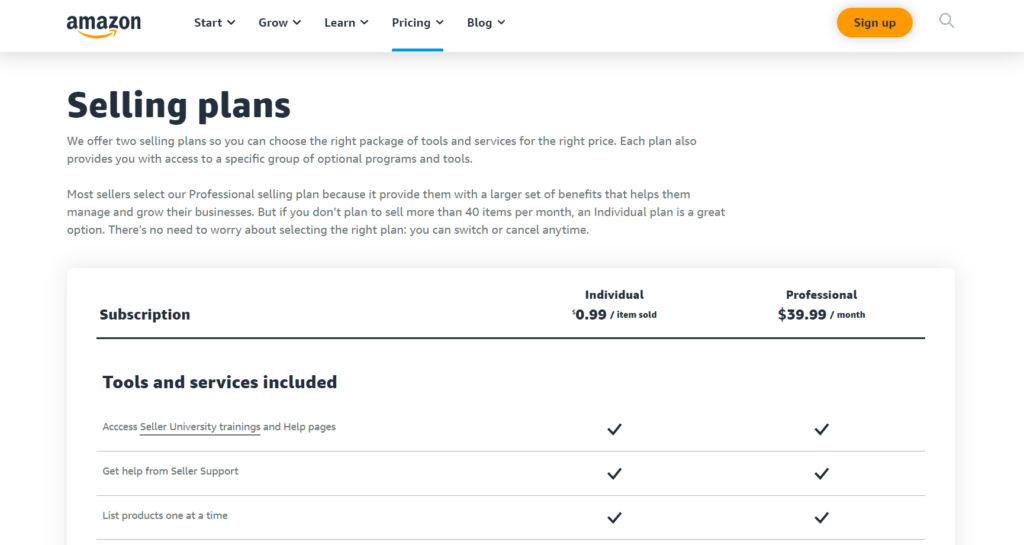
One of the ways of getting the best from Amazon FBA is to understand what influences the amount you pay for the services you get using the platform.
Product size and weight
The size and weight of products directly impact the fulfillment fees Amazon charges. Larger or heavier items typically incur higher fees due to the increased storage and shipping costs associated with handling them.
Storage duration
The length of time inventory remains in Amazon’s fulfillment centers affects pricing. Short-term storage fees are charged based on the duration of storage, while long-term storage fees apply to inventory you store for an extended period, typically beyond six or twelve months.
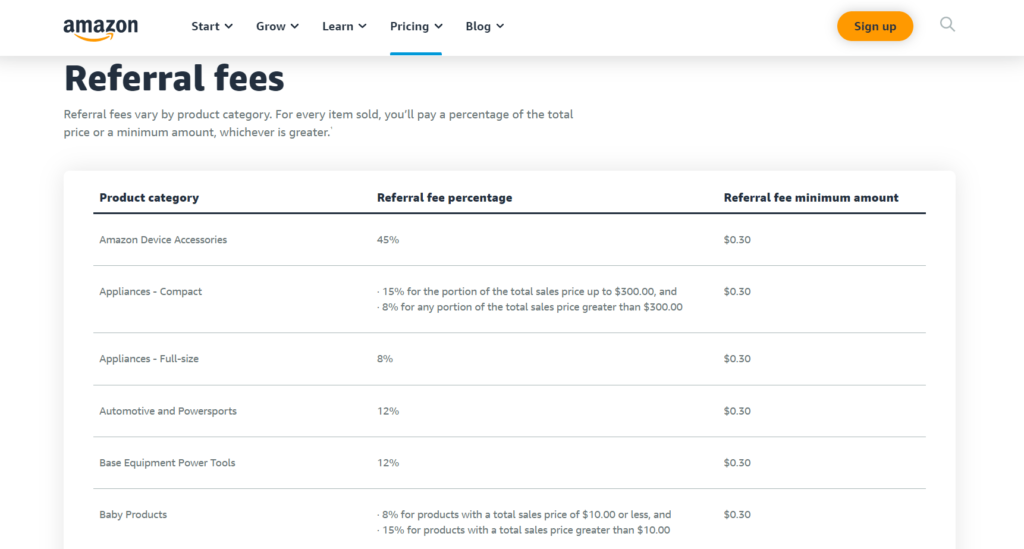
Product category
Amazon categorizes products into different fee structures based on their category. Certain categories have higher or lower fulfillment fees and referral fees, depending on factors like demand, competition, and handling requirements.
Additional services
Optional services Amazon provides, such as labeling, prep, removal orders, and returns processing, incur extra charges. You can choose to utilize these services based on your needs, but they add to the overall cost of using FBA.
Shipping distance
The distance between Amazon’s fulfillment centers and the final destination of the customer’s order can impact pricing.
Amazon’s fulfillment fees vary depending on the shipping zones, with higher fees for orders you ship to locations farther away from the fulfillment center. This consideration helps account for the varying costs associated with shipping products to different regions, contributing to the overall pricing structure of Amazon FBA.
WHAT AFFECTS PRICES IN THE INDUSTRY OVERALL?
Economic conditions
Overall economic conditions, such as inflation rates, labor costs, and fuel prices, can influence fulfillment prices. Higher operating costs often lead to increased fees to maintain profitability for fulfillment service providers.
Technology and automation
Advancements in technology and automation can impact fulfillment pricing. Investments in automation can improve efficiency and reduce labor costs, potentially leading to lower prices for fulfillment services over time.
Market competition
Competition among fulfillment service providers plays a significant role in pricing. Intense competition leads to price wars or the introduction of competitive pricing strategies to attract and retain customers.
Regulatory compliance and industry standards
Compliance with regulations and industry standards, such as safety regulations, environmental requirements, and labor laws, can affect operating costs for fulfillment centers. Meeting these standards require additional investments in training, equipment, or infrastructure, which can influence pricing.
Service level and customization
The level of service and customization the fulfillment providers offer can impact pricing. Premium services, such as same-day delivery, specialized packaging, or customizable order processing, typically command higher fees compared to standard fulfillment services. Additionally, the complexity of fulfilling orders, such as handling fragile or perishable items, may also affect pricing.
>>> GET SMARTER : Best Dropshipping Apps for Amazon
HOW TO GET THE BEST DEAL WITH AMAZON FBA?
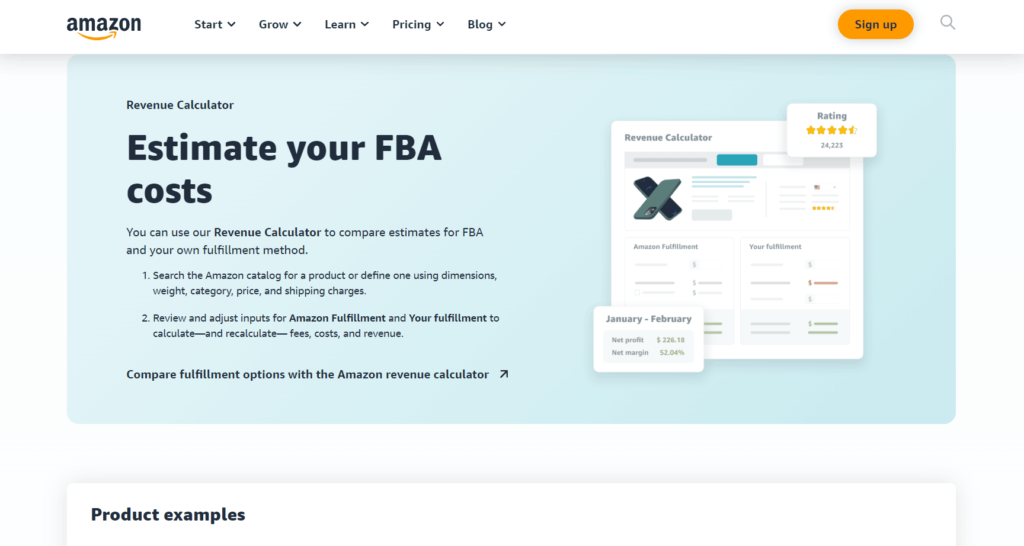
To secure the best deal with Amazon FBA, carefully assess your business needs and compare pricing structures with alternative providers.
Utilize Amazon’s fee calculators and consider factors like product size and storage duration to estimate costs accurately. Continuously optimize your operations to minimize expenses and maximize efficiency, ensuring the best value with Amazon FBA.
Do a thorough analysis of your business needs
Before committing to Amazon FBA, conduct a comprehensive assessment of your business requirements.
Consider factors such as your product catalog, sales volume, order frequency, and geographic distribution of customers. Understanding your specific needs help you choose the most suitable fulfillment solution.
Comparison of pricing structures
Research and compare the pricing structures of different fulfillment options.
Look beyond just the upfront fees and consider additional costs such as storage fees, fulfillment fees, shipping rates, and any minimum volume requirements.
Utilization of Amazon's fee calculators
Amazon provides fee calculators and other tools to help you estimate the costs associated with using FBA. These calculators allow you to input details about your products, inventory levels, and shipping destinations to get an accurate projection of your expenses.
Take advantage of these resources to make the best decisions about your fulfillment strategy.
Consideration of factors impacting costs
When estimating costs, consider various factors that can influence pricing, such as the size and weight of your products, the duration of storage, the complexity of fulfillment requirements, and any additional services you need.
By accounting for these factors, you can better understand the total cost of using Amazon FBA and identify opportunities to optimize expenses.
Ensure continuous optimization of operations
Continuously monitor and optimize your operations to minimize costs and maximize efficiency.
Regularly review your inventory levels, adjust pricing strategies, streamline order processing workflows, and leverage Amazon’s tools and resources to improve your bottom line over time.
CAN YOU AFFORD AMAZON FBA’S PRICES?
Understand your business’s financial situation, profit margins, and sales volume to know if you can afford Amazon FBA’s prices. Do the fees associated with Amazon FBA align with your budget and profitability goals?
Remember to include factors such as the size and weight of your products, storage duration, fulfillment fees, and additional services you require.
Evaluate how these costs impact your overall expenses and whether the benefits of using Amazon FBA, such as access to a large customer base and streamlined logistics, outweigh the fees you’re going to incur.
FINALLY: SHOULD YOU CHOOSE AMAZON FBA OR NOT?
Opt for FBA if you primarily sell on Amazon so that you can access Prime benefits and leverage its vast customer base. Or if you have high sales volume—with that you enjoy discounts and economies of scale that make FBA cost-effective.
Settle for Amazon FBA if your products are small and lightweight, since that means lower per-item fees compared to ShipBob.
Consider ShipBob if you sell across multiple channels. You enjoy greater flexibility and potentially lower multi-channel fees. Or if your products are large, bulky, or fragile.
ShipBob is also best if you require control over branding and fulfillment. With ShipBob, you can explore different customization options.


